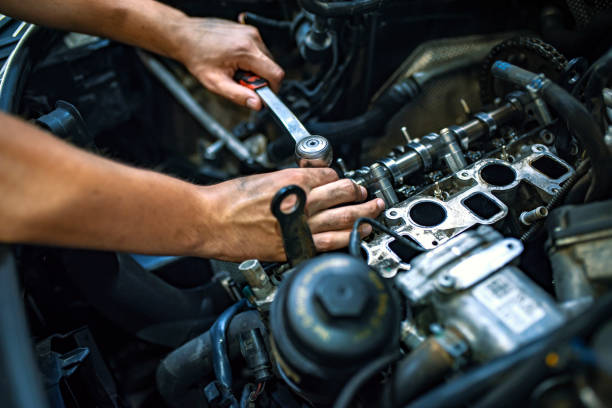How a jump starter works and how to use one safely
A jump starter is a portable power device designed to start a vehicle when the car battery is dead or too weak to crank the engine. It’s compact enough to store in a trunk or garage and can save time compared with waiting for roadside assistance. Knowing how jump starters work, how to pick an appropriate model, and how to use one safely improves preparedness for automotive interruptions and adds a reliable item to your emergency kit.

What is a jump starter and how does it work?
A jump starter stores electrical energy in a battery (lead-acid or lithium-ion) and delivers a high-current burst to a vehicle’s starter motor, bypassing the car battery. Most modern units include built-in clamps, safety features like reverse-polarity protection, and outputs for charging phones or running small accessories. Traditional jump-starting with another vehicle uses jumper cables; a portable jump starter removes the need for a second vehicle or a helper.
Understanding capacity and peak current helps match the unit to your vehicle. Capacity (amp-hours or watt-hours) indicates stored energy, while peak or cranking amps indicate the instantaneous current available to turn over the engine. Manufacturers provide guidance on which engine sizes and vehicle types a model is intended for — follow those specifications rather than guessing.
How to use a jump starter safely on a car battery
Before connecting a jump starter, check the vehicle owner’s manual for any manufacturer warnings. Wear eye protection and keep metal objects away from battery terminals. Turn off the ignition, lights, and accessories to reduce electrical load. Identify positive (+) and negative (–) terminals on the car battery and on the jump starter clamps; attach the positive clamp first, then the negative clamp to an engine block or chassis ground if recommended by the jump starter instructions.
After connecting, allow the jump starter to deliver power as instructed — many models require a short wait, others permit immediate cranking. Attempt to start the vehicle; if it doesn’t start after the recommended number of tries, disconnect and allow the jump starter to recover per the manual. Always disconnect negative clamp first and store the unit properly. If you are uncomfortable, consider contacting local services for assistance.
Choosing the right jump starter for your vehicle
Select a unit that matches your vehicle’s engine type and size: gasoline engines generally require lower cranking amps than diesel engines. For automotive use, look for a jump starter with sufficient peak amps for your engine displacement and safety features such as reverse-polarity protection, short-circuit protection, and spark-proof clamps. Portable lithium-ion units are lighter and often include USB outputs; lead-acid models can be heavier but sometimes cost less for a given capacity.
Also consider additional features that matter to your routine: integrated air compressors, LED work lights, or built-in battery voltage indicators. If you drive larger vehicles, tow, or own multiple cars, choosing a higher-capacity model provides more reliable starts. Check the manufacturer’s specifications and match them to your vehicle rather than relying on marketing terms.
Automotive safety and maintenance with jump starters
Regular maintenance extends the life of both the jump starter and your car battery. Keep the jump starter charged per the manufacturer’s schedule; some units self-discharge over months and should be recharged every few months if unused. Inspect clamps for corrosion or damaged insulation and clean battery terminals on the vehicle as needed. When storing in a trunk or garage, protect the unit from extreme temperatures which can affect battery performance and safety.
If your automotive battery requires frequent jumps, have the battery and charging system tested by a qualified technician. Repeatedly relying on a jump starter can indicate an underlying issue such as a failing battery, alternator problems, or parasitic electrical drains. For roadside concerns or repairs beyond your comfort level, contact trusted local services for diagnostics and replacement.
Including a jump starter in your emergency kit
A jump starter is a practical addition to an emergency kit for daily drivers and long-distance travelers. Pack the unit along with basic tools, a flashlight, gloves, and jumper-cable-safe clothing. Store charging cables for the jump starter so it can be recharged at home or from a vehicle 12V outlet when possible. Note the unit’s weight and size so the kit remains manageable and accessible in your vehicle.
Keep a simple checklist in your emergency kit: make sure the jump starter is charged, clamps are intact, and the manufacturer’s instructions are available (digital or printed). Review the checklist seasonally and before long trips. If you prefer professional help, identify local services in your area that offer battery or jump-start assistance, and include their contact information in the kit.
Conclusion
Jump starters are a convenient, often safer alternative to traditional jump-starting from another vehicle when used properly. Choosing a model suited to your vehicle, following safety procedures for connection and disconnection, and including the device in a regularly maintained emergency kit can reduce roadside delays and uncertainty. Regular maintenance and professional checks for recurring battery issues ensure both the jump starter and the vehicle remain reliable.





